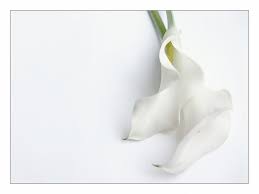White Flock Wallpaper History
I was one of those kids with a pretty extensive collection of scratch-n-sniff and fuzzy stickers. So it’s not surprising that I’m a fan of the new flocked papers on the market. Flocking is the technique of applying small fiber particles to any surface coated with an adhesive. Applied to paper, it gives a three-dimensional velour texture. Flocked wallpapers got a bit of a bad rap after their overuse in the ’70s, but they have come back with a vengeance — you can go the traditional damask route or more avant-garde, like the papers from the Timorous Beasties, or go for something with a modern feel, such as the flocked stripes from Lasari Flock. I got so inspired by all the flocking that I channeled my inner 5th-grade fuzzy-sticker-loving self and created my own flocked stationery. — Amy A.
(Psssst: If you’re on a wallpaper kick, check out the Best of Wallpaper from the Sneak Peek Archives)
Image above: Portion of wallpaper with rococo floral design in flock. England, about 1760, from the Victoria & Albert Museum
Flock — a powdered wool and a waste product of the woolen cloth industry — began to be applied to papers in about 1600. Leather hangings that were painted with gold or silver foil initially inspired the flocked papers, but they were created as a less-expensive alternative to cut-velvet wall hangings. It was a pretty big cost savings — flocked papers were half the cost of cut velvet (although they certainly were still a luxury item). An additional advantage to flock paper was that the turpentine used to affix the flock to the paper was a moth repellant, a huge bonus during a time when textiles were enormously expensive.








I was one of those kids with a pretty extensive collection of scratch-n-sniff and fuzzy stickers. So it’s not surprising that I’m a fan of the new flocked papers on the market. Flocking is the technique of applying small fiber particles to any surface coated with an adhesive. Applied to paper, it gives a three-dimensional velour texture. Flocked wallpapers got a bit of a bad rap after their overuse in the ’70s, but they have come back with a vengeance — you can go the traditional damask route or more avant-garde, like the papers from the Timorous Beasties, or go for something with a modern feel, such as the flocked stripes from Lasari Flock. I got so inspired by all the flocking that I channeled my inner 5th-grade fuzzy-sticker-loving self and created my own flocked stationery. — Amy A.
(Psssst: If you’re on a wallpaper kick, check out the Best of Wallpaper from the Sneak Peek Archives)
Image above: Portion of wallpaper with rococo floral design in flock. England, about 1760, from the Victoria & Albert Museum
Flock — a powdered wool and a waste product of the woolen cloth industry — began to be applied to papers in about 1600. Leather hangings that were painted with gold or silver foil initially inspired the flocked papers, but they were created as a less-expensive alternative to cut-velvet wall hangings. It was a pretty big cost savings — flocked papers were half the cost of cut velvet (although they certainly were still a luxury item). An additional advantage to flock paper was that the turpentine used to affix the flock to the paper was a moth repellant, a huge bonus during a time when textiles were enormously expensive.
White Flock Wallpaper
White Flock Wallpaper

White Flock Wallpaper
White Flock Wallpaper
White Flock Wallpaper

White Flock Wallpaper

White Flock Wallpaper
White Flock Wallpaper
White Flock Wallpaper
J.F. Fabrics Black & White Wallpaper Book
White Blank Background Video Wallpaper Empty
No comments:
Post a Comment